Planning a Comic – 10 Tips from Researching for “Kindred Not”
Planning a comic will increase its chances of success. So this article gives 10 tips for researching and preparing a comic. It lists a bunch of things to research before diving into making a comic. For example, advertising, creating revenue, printing, publishing, cover design, setting, music, world-building, and style.
These tips are best used for long-form comics. Comic strips or comics less than ten pages do not require as much planning. Nonetheless, these research tips are great for anyone making a weekly Webtoon, a graphic novel, multiple comic issues, etc.
Additionally, these tips are written from first-hand knowledge and experience of important things to do when planning a comic. This article will use my comic, Kindred Not, for examples. I am currently planning and researching for Kindred Not using these tips. Also, I have finished two comics using many of these tips. So rest assured, this advice is not just random.
*Update: Kindred Not Comic has now launched. Read Episode 1 of Kindred Not now.
1. Make an Action Plan for Your Comic
My first tip for planning a comic is to write down an action plan. So, grab a keyboard or pencil and start writing. For example, write down your biggest goals for your comic. Then, list actionable steps to complete these goals. However, do not just make a giant to do list; also come up with a timeframe for how long you want your comic to take to make. Next, make a schedule of how much work needs to get done each week to finish your comic.
Additionally, use this action plan to document the research you do for your comic as well. For instance, if you intend to print your comic, there are two things you should write down on your action plan. Number one, write the steps you need to take to get your comic printed. And number two, write down any research you do on comic printing, such as printers and printing costs.
For my comic, Kindred Not, my action plan has become a rather detailed document, which I keep in Google Docs. My action plan includes notes on advertising, creating revenue, printing, publishing, crowdfunding, book launching, scheduling, scripting, character personalities, etc. To learn more about these things continue reading below.
2. Plan How You Will Advertise Your Comic
Second, when planning your comic, you may want to make an advertising plan. If you want your comic to grow a large audience, you will need to plan how you will advertise it. For example, I made a list of the best places to publish comics. You may also want to research about whether your comic needs a website. This could be a way to help grow its audience.
Additionally, you may want to make some advertising material for your comic. This can include making a logo, banners, advertisements, posters, and wallpapers. They say you cannot judge a book by its cover, but this is not always true. Comics are a very visually driven medium. So when planning your comic, make sure to make some promotional drawings for social media and marketing.
The comic I am planning, Kindred Not, is still in early development stages. The script is not even finalized yet. However, I designed the logo for it already. Designing the logo early on ensures I have at least a little bit of branding to use when sharing about the comic’s development. For instance, the logo acts as a visual cue for people online. Whenever they see the logo on an article/drawing/social media post, they will know it is related to the comic.
3. Plan Your Comic’s Revenue Plan
Third, before starting your comic, you may want to make a revenue plan. If you want to treat your comic like a business endeavor, do some research on this subject. Then, list out some ideas on how to monetize your comic. These can include, making a Gumroad store, starting a Patreon, selling print copies, getting advertisements, or having a digital tip jar.
Personally, I like to make comics regardless if I can earn a dime from them. Despite this, I love being able to offer print copies and bonus comic material available for sale. So, for Kindred Not, I have been looking into making some digital downloadable products. Additionally, I am making printing plans so that the physical copies will be affordable. Read my next tip, to learn more about making comic printing plans.
4. Research Comic Printing
Fourth, when starting a comic, it is a good idea to research comic printing beforehand. If you intend to print your comic, you will want to come up with a printing plan. Additionally, depending on if you are using a publisher or self-publishing, this will affect your printing plan. Also, do some research to decide the best size for your comic. Likewise, decide whether you want to make it in black and white or full color, as this will effect printing costs. Additionally, consider your comic’s page count if you intend to print it, as this will effect printing costs as well. Watch this video, Where to Print Your Comic Books and Graphic Novels? for some more helpful tips on the subject.
I have already done some comic printing research for Kindred Not. For example, as shown below, I have made a table to compare printing costs from different websites. Also, I decided to choose a standard paper size of 8.5 x 11 inches, as this size is usually available, no matter which printer I decide to go with. Additionally, I looked into how much the price per book would go down depending on how many copies are purchased. Likewise, I compared printing costs for paperbacks versus hardcovers. If you are interested in printing your comic, you can read about publishing, crowdfunding, and book launching in my next tip.
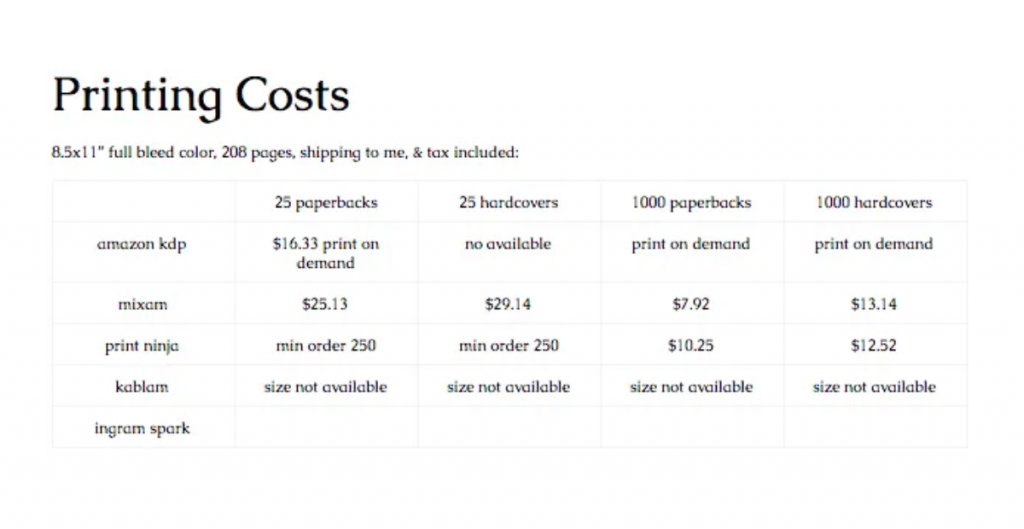
5. Study Publishing, Crowdfunding, & Book Launching
Fifth, when planning your comic, you should research a few publishing methods. If you intended to monetize your comic, having a publishing plan is definitely helpful. If you want to share your comic online, you can read about the best places to publish webcomics. Additionally, whether you plan to make a webcomic or print comic, you can look into different publishers, self-publishing methods, crowdfunding sites, and how to do a book launch. Some example self-publishing printers are Amazon KDP, Mixam, Print Ninja, Kablam, and Ingram Spark. Some examples crowdfunding sites are Kickstarter and IndieGogo. Furthermore, whether you are self-publishing or using a publisher, have a firm plan to launch your comic. For example, study how to use book launching strategies to increase your comic’s fanbase and sales.
I have been studying publishing, crowdfunding, and book launching so that I can ensure the success of Kindred Not. For example, I have been listening to the 3 Point Perspective: The Illustration Podcast. This podcast, by Will Terry, Lee White, and Jake Parker, is a goldmine of publishing and comic making tips. Additionally, I have been researching about crowdfunding, and learning from creators who have successfully crowdfunded their comics. For instance, this video series on launching a comic book with Kickstarter by Jake Parker is super informative.
6. Get Comic Book Cover Inspiration
Your comic book cover can either turn off potential readers or get them hooked. So it is super important to put some research into. A comic cover can be used to promote webcomics as well, not just print comics. So research some successful book covers, graphic novel covers, and movie posters. Then, use these as inspiration to create a strong cover design for your comic. Additionally, a major part of your comic’s cover is the title. Make sure you have a good title picked out. Then, study some graphic design to figure out how to style it for your comic’s cover.
For Kindred Not, I have started planning out the cover. I have collected cover designs I like on a Pinterest board. Then, I used that inspiration to create the design for the comic’s title. You can see in the image below how I may possibly place the title on the front cover. Also, I designed the “O” in the title to work as a stand alone logo, as seen on the back cover below.
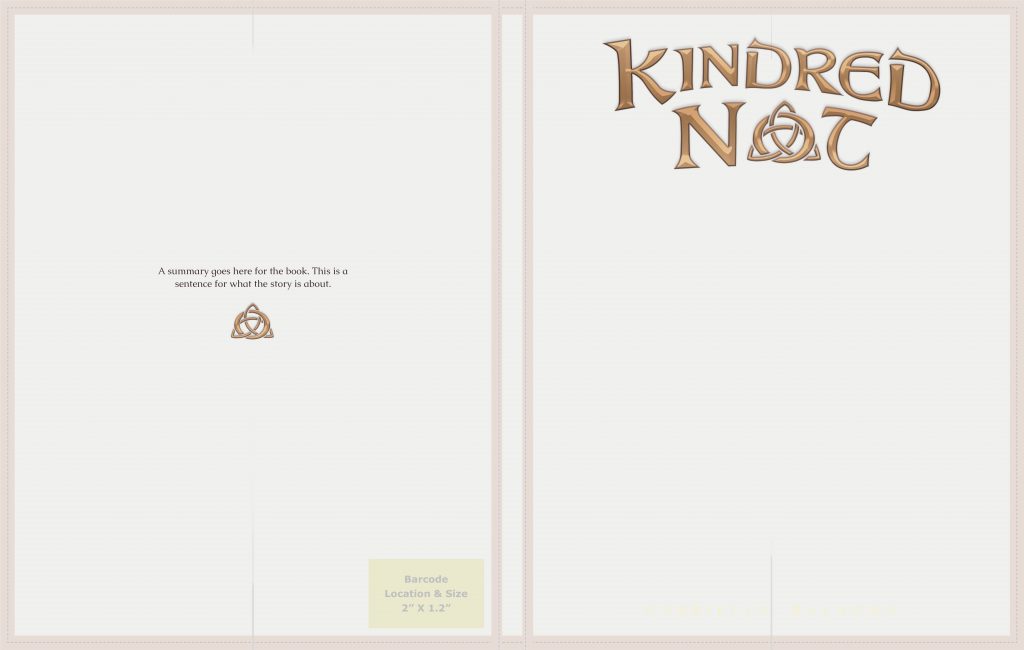
7. Research Your Comic’s Setting
The setting is a major component to many comics. So, be sure to do some research of how you want it to look. Even if your comic is fictional, you can base it on a real place. For example, you can look up reference images of a particular country or environment to base the setting on. Planning the setting for your comic will help ensure it does not look unattractive. It will also help your comic feel more real and thus, help readers get more immersed in your comic’s world. Furthermore, it will help you avoid leaving boring blank backgrounds on your comic pages.
For Kindred Not, I am collecting photos to help develop the backgrounds. You can see a collection of some photos that are inspiring its setting below. I collected these photos before and during working on the scripting process. That way, instead of just collecting random photos, I have collected ones that actually match the storyline. I thought about the main locations for each part of the script, and then collected photos for them. These photos will also come in handy as reference when doing concept art and drawing the comic pages.
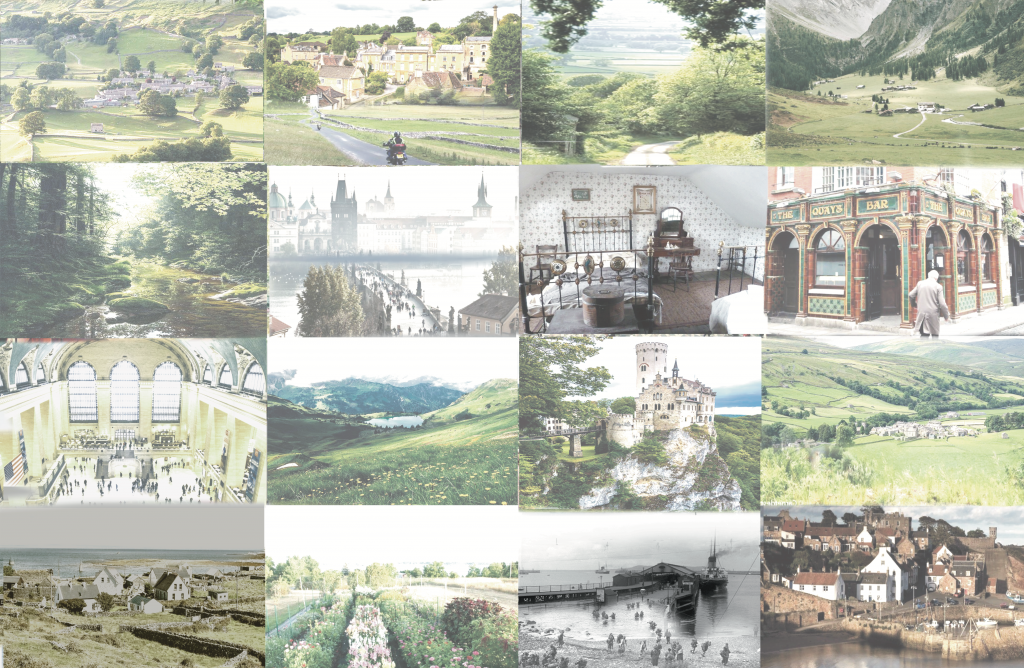
8. Plan Your Comic’s Culture
Plan the language, culture, history, and other world-building for your comic. This will inform your dialogue, clothing, holidays, weapons, etc. used in your comic. You can base your comic’s culture on real life or make up a completely fictional culture. Either way, it is helpful to research cultures from real life. You can even combine multiple cultures together for a fictional comic. Additionally, for fantasy comics, you can research myths and magic systems as well.
Kindred Not is based off of countries in the United Kingdom. So I researched countries like, Scotland, Ireland, and England. For example, when scripting the dialogue, I looked up words and phrases common to these cultures. This will help the characters’ speech and accents feel more authentic. Additionally, I looked up the types of food and clothing in these countries so I can can include them in the comic. Furthermore, Kindred Not is set in a fictional 1930s or 1940s. So, I have been researching typography, technology, etc. from the WWII era.
9. Why Your Comic Needs a Playlist
I used to think making a playlist for your comic was a waste of time. However, while drawing or writing your comic, having some background music may help you to stay focused. Additionally, music can help you capture the right feeling when drawing or scripting. Thirdly, if you make a trailer or promotional videos for your comic, you will need background music to make the videos more interesting. Finally, if you make a playlist on YouTube, not only can you save music to it, but other videos as well. For instance, you can save video tutorials and videos that make for good references.
I made a YouTube playlist for Kindred Not to collect helpful videos. For example, while scripting, I like to play background music from the playlist, as it helps me keep focused. This way, I am able to write longer and not get bored. Additionally, I saved some comic-making advice videos that I want to refer back to later. Moreover, I use the playlist to collect background reference. For instance, I could not find a good reference photo for a particular setting I was trying to envision, so I found a video instead. Then, when I go to draw the comic pages for that scene I will not have to get sidetracked trying to find reference, as I already have it saved.
10. Collect Style Inspiration
Create a set style for your comic to help it feel both consistent and interesting. For example, research color palettes, character design, and fashion that you want to use in your comic. Collect the inspiration in a folder, on Pinterest, to your camera roll, or whatever way you prefer. Then, refer to it when creating concept art, drawing the pages of your comic, etc.
As mentioned earlier, Kindred Not is based on a fictional 1930s or 1940s. So I have been saving photo reference from that time period. The reference has already come in handy. For example, below are some doodles of clothing designs I did using the photo references I saved. These will be very helpful when drawing background characters for the comic, so they all have a consistent fashion. It will also save me time when drawing the pages, as I will not have to stop and think of designs or get distracted while researching the internet for designs.
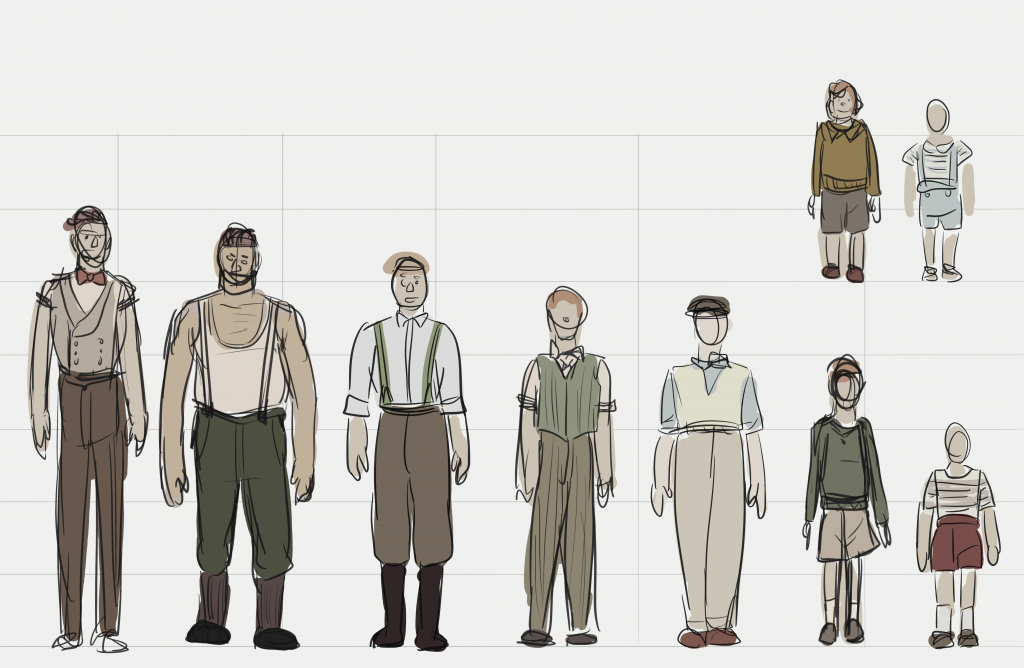
Bonus Tip for Planning a Comic
The most important advice I have for planning a comic is to not take too long. You may have heard of the guy who spent 13 years drawing a comic. Unless you are making hundreds of comic pages, you should not spend that long on your comic. Additionally, avoid falling into the trap of world-building for years on end if you want to get your comic done fast. Read this article, Productivity for Artists & How to Achieve Your Art Goals, to help you get your comic done.
There is nothing wrong with taking your time planning a comic. This is especially true if comic making is just a hobby for you. However, if you want to actually get around to finishing your comic, try not to spend too long planning. Also, you do not have to do all these comic planning tips before starting to draw comic pages. You can work on both things at once if you prefer.
Personally, I have just spent the past few years working on my last comic, Derailed. So, I am no rush to finish Kindred Not. Instead, I am just taking my time right now, enjoying the process. After all, I want drawing and comic-making to be fun! However, after I have had a little break and relaxation time, then I will start giving myself deadlines to get Kindred Not finished.
Next Steps for Planning a Comic
Now that you have learned about planning a comic, check out my Comprehensive Guide to Making a Webcomic.
Also, leave a comment on what steps you will take today to start planning your comic.
Additionally, subscribe to the site for more articles like this. Thanks for reading!

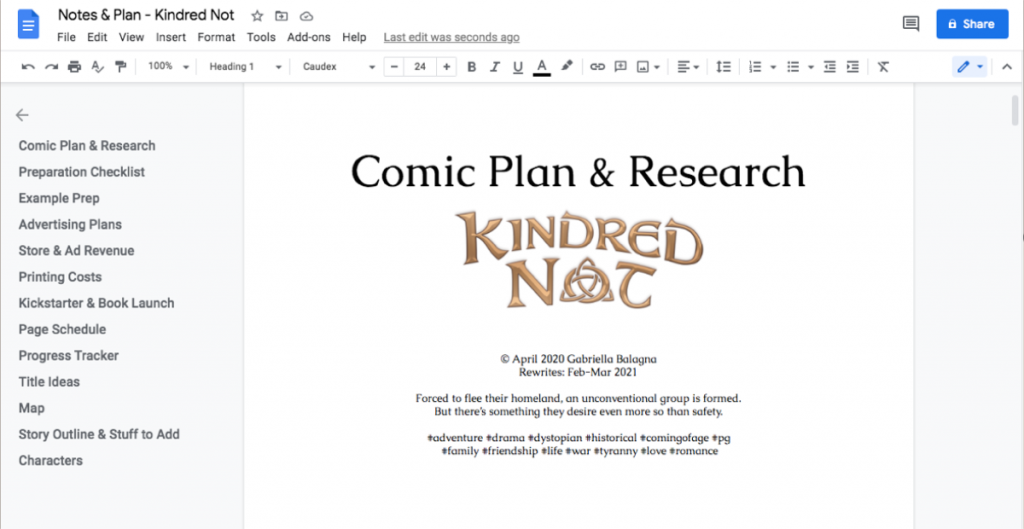
Discussion ¬